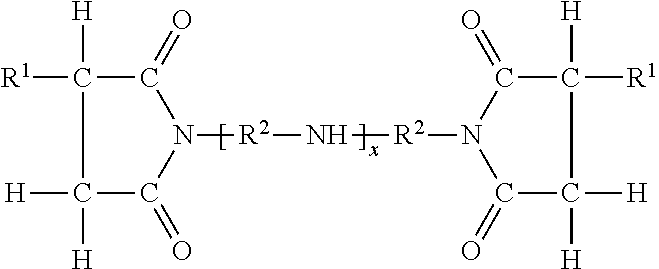Low viscosity marine cylinder lubricating oil compositions
a lubricating oil and low viscosity technology, applied in the field of low viscosity marine cylinder lubricating oil compositions, can solve the problems of acid wear, corrosive wear, and high energy cost, and achieve the effect of maintaining wear performance and maintaining wear performance of marine cylinder lubricants
- Summary
- Abstract
- Description
- Claims
- Application Information
AI Technical Summary
Benefits of technology
Problems solved by technology
Method used
Image
Examples
Embodiment Construction
Definitions
[0022]The term “TBN” means the Total Base Number of a lubricant as measured by the ASTM D-2896 test.
[0023]The term “marine cylinder lubricant” as used herein shall be understood to mean a lubricant used in the cylinder lubrication of a slow speed or medium speed diesel engine. The marine cylinder lubricant is fed to the cylinder walls through a number of injection points. The marine cylinder lubricants of the present invention are capable of providing a film between the cylinder liner and the piston rings and holding partially burned fuel residues in suspension, to thereby promote engine cleanliness and neutralize acids formed by, for example, the combustion of sulfur compounds in the fuel.
[0024]The term “bright stock”, as used by persons skilled in the art, refers to base oils that are direct products of de-asphalted petroleum vacuum residuum or derived from de-asphalted petroleum vacuum residuum after further processing such as solvent extraction and / or dewaxing. For th...
PUM
| Property | Measurement | Unit |
|---|---|---|
| kinematic viscosity | aaaaa | aaaaa |
| kinematic viscosity | aaaaa | aaaaa |
| kinematic viscosity | aaaaa | aaaaa |
Abstract
Description
Claims
Application Information
 Login to View More
Login to View More - R&D
- Intellectual Property
- Life Sciences
- Materials
- Tech Scout
- Unparalleled Data Quality
- Higher Quality Content
- 60% Fewer Hallucinations
Browse by: Latest US Patents, China's latest patents, Technical Efficacy Thesaurus, Application Domain, Technology Topic, Popular Technical Reports.
© 2025 PatSnap. All rights reserved.Legal|Privacy policy|Modern Slavery Act Transparency Statement|Sitemap|About US| Contact US: help@patsnap.com

